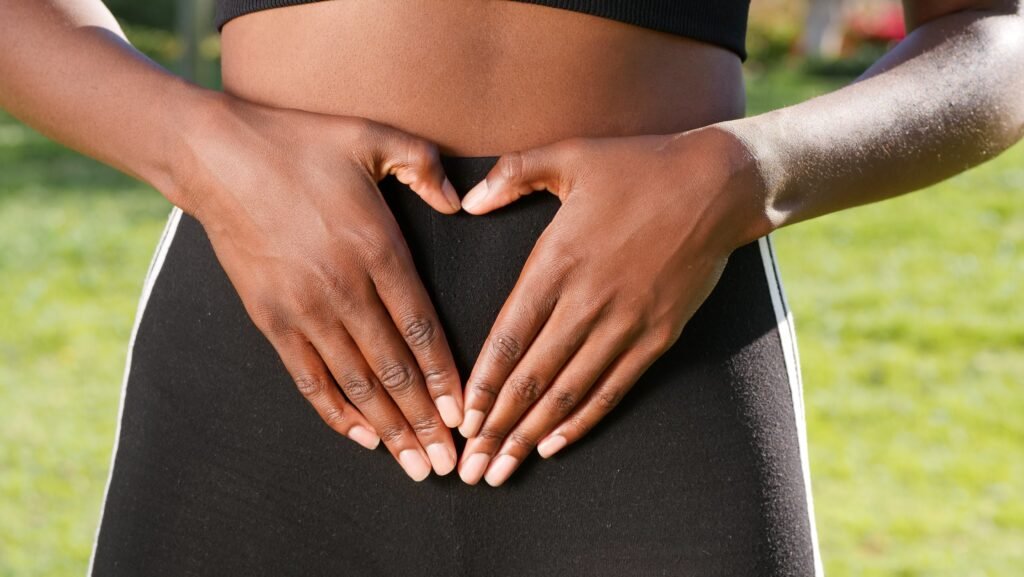Breast cancer is characterized by the presence of cancerous cells in the breast. Breast cancer can happen in both women and men but it has a high chance to occur in women. In Indian women, breast cancer is the most common form of cancer. It accounts for 14% of all cancers in women.
Stages of breast cancer –
- Stage I – tumor has spread to normal surrounding breast tissue.
- Stage II – tumor has grown larger and may have spread to lymph nodes
- Stage III – tumor is larger in size than the earlier stages and may have spread further into lymph nodes.
- Stage IV – most advanced stage of cancer. tumor has spread to many lymph nodes as well as to distant organs.
What Causes Breast cancer?
The causes of breast cancer are not clearly understood, but there are some factors that can increase the risk of breast cancer.
DNA mutations – Inherited mutation on one of two genes called breast cancer gene 1 (BRCA1) and breast cancer gene 2 (BRCA2). 1
What are the Risk Factors?
- Age
- Gender
- Obesity
- Alcohol
- Dense breast tissue
- Personal history of breast cancer
- Family history of breast cancer
- Gene mutations – Inherited changes in the BRCA1 or BRCA2 genes.
- Radiation exposure
- Hormone replacement therapy
- Never giving birth (Infertility)
- Starting menstruation at an early age- before age 12
- Beginning menopause at later age.
Signs and symptoms
- Breast lump and thickening
- Change in size, shape or appearance
- Irritated and itchy breasts
- Pain in nipple or breast
- Skin dimpling
- Abnormal discharge
- Swollen lymph nodes
What are the Complications?
Breast cancers are mostly benign. At advanced stages, it may lead to secondary cancers and different organ complications like breathing problems, inflamed lung tissues.
Diagnosis: How to diagnose Breast cancer?
- Medical history – Check for symptoms, family history and other risk factors.
- Physical examination – Breast exam
- Diagnostic tests – The tests performed are:
- Screening tests –
- 1. Mammography –
- Mammogram is a picture of the inside breast
- Most common screening test
- Film mammography, digital mammography, digital breast tomosynthesis.
- 2. MRI – It is a procedure that uses magnetic, radio waves and computer to form pictures of the area inside the body.
- Breast ultrasound – A procedure in which high-energy sound waves (ultrasound) are used to form a picture of area inside the breast called a sonogram.
- Breast biopsy – Removal of a small amount of tissue from breast for examination under a microscope to look for precancerous cells or cancer cells.
- Different types of biopsies can be performed such as –
- Fine needle aspiration (FNA) biopsy (thin needle used to withdraw breast tissue)
- Core needle biopsy (larger needle used to withdraw breast tissue)
- Surgical biopsy
- Lymph node biopsy
- Different types of biopsies can be performed such as –
- CT scan: A procedure that makes a series of detailed pictures of areas inside the body
- PET scan: A procedure that uses radioactive glucose to find malignant tumor cells in the body.
Treatment: How is Breast cancer treated?
Treatment depends upon the size of the tumor and its stage. For stage I – stage III breast cancer, surgery, and radiotherapy are usually preferred in combination with chemo or other drug therapies.
- Surgery :
- Lumpectomy-only tumor with surrounding tissue is removed
- Mastectomy– surgery in which the entire breast is removed
- contralateral prophylactic mastectomy (CPM) -Both breasts are removed
- lymph node dissection – surgery to remove lymph nodes
- Radiotherapy
- Recommended to reduce the risk of a cancer recurrence after surgery.
- 1. External radiation therapy uses a machine outside the body to send radiation toward the cancer.
- 2. Internal radiation therapy uses a radioactive substance that is placed directly into or near the cancer.
- Chemotherapy
- Chemotherapy uses anti-cancer drugs to kill and stop the growth of cancer cells.
- Medications-
- Doxorubicin and epirubicin
- Taxanes- paclitaxel and docetaxel
- 5-fluorouracil (5-FU) or capecitabine
- Cyclophosphamide (Cytoxan)
- Carboplatin (Paraplatin)
- Vinorelbine (Navelbine)
- Gemcitabine (Gemzar)
- Ixabepilone (Ixempra)
- Eribulin (Halaven)
- Hormone therapy
- Hormone therapy slows the growth of certain types of cancer cells that have receptors to specific hormones.
- Tamoxifen and Fulvestrant – blocks estrogen receptors on breast cancer cells.
- Aromatase inhibitors (AIs) – drugs that lower estrogen levels e.g., Letrozole, Anastrozole Exemestane.
- Targeted therapy –
- Drugs for HER-2 (growth-promoting protein) positive cancer cells –
- Monoclonal antibodies: Trastuzumab, Pertuzumab, Margetuximab.
- Antibody-drug conjugates: Fam-trastuzumab deruxtecan.
- Drug targets the TRK proteins – Larotrectinib and entrectinib
- Drugs for hormone receptor-positive cancer cells – estrogen and progesterone receptor-positive.
- CDK4/6 inhibitors – Palbociclib, ribociclib, and abemaciclib.
- mTOR inhibitor – Everolimus (Afinitor)
- PI3K inhibitor- Alpelisib (Piqray)
- Drugs for women with BRCA gene mutations.
- PARP inhibitors – Olaparib and talazoparib.
- Drug for Triple-negative breast cancer (TNBC) – cancer cells that are negative for estrogen, progesterone and HER2 proteins.
- Drug targets Trop-2 protein – Sacituzumab govitecan.
- Drugs for HER-2 (growth-promoting protein) positive cancer cells –
- Immunotherapy
- Immune checkpoint inhibitor– The immunotherapy drugs pembrolizumab (Keytruda) ( PD-1 protein inhibitor) is approved to treat tumors that have either high microsatellite instability (MSI-high) or dMMR, regardless of the tumor’s location in the body.
- PD-L1 inhibitor – Atezolizumab.
Prevention: Can we prevent it?
Prevention of Breast cancer –
- Pregnancy and breast-feeding : Estrogen levels are lower during pregnancy and when breastfeeding.
- Avoid or limit alcohol
- Healthy weight
- Physical activity
- Screening tests
Living with Breast cancer–
- Follow-up care (Genetic counseling)
- Avoid alcohol
- Staying at a healthy weight
- Regular physical activities
- Mammograms
- Pelvic exam ( to check for side effects of tamoxifen)
When to see a doctor? :
It is wise to consult with a gynecologist immediately if observed any symptoms like lump and pain in the breast. The typical consultation fee for a gynecologist ranges from Rs. 500 to Rs. 1500 in India.
Consult Oncosurgeons
- Consult an Oncologist at Hinduja Hospital Mumbai
- Dr Ch Uday- Oncologist at Aster Hospital
- Dr. Abhishek Puri- oncologist at Fortis Hospital
- Dr. Aditi Chaturvedi- oncologist at Max Hospital
- Dr. Aditi P- Oncologist at Aster Hospital
- Dr. Aditya Joshipura- oncologist at HCG Hospital
- Dr. Akshat Malik- oncologist at Max Hospital
- Dr. Akshay Shah- oncologist at Fortis Hospital
- Dr. Akshay Tiwari- oncologist at Max Hospital
- Dr. Alok Narang- oncologist at Max Hospital
- Dr. Amal Roy Chaudhoory- oncologist at Fortis Hospital
- Dr. Amit Agarwal- oncologist at Fortis Hospital
- Dr. Amit Bhargava- oncologist at Fortis Hospital
- Dr. Amit Chakraborty – oncologist at Nanavati Hospital Mumbai
- Dr. Amit Ghanekar- oncologist at Fortis Hospital
Types of Cancers
- Myelodysplastic neoplasms: a rare blood disorders

- Myeloproliferative Neoplasm: abnormal proliferation of blood cells

- Cervical Cancer: abnormal growth of the tissues of the cervix

- Vaginal Cancer: cancer of the female reproductive system

- Ovarian cancer: cancer that begins in the ovaries

Cancer Specialists
- What Is a Mammogram?
- Myelodysplastic neoplasms: a rare blood disorders
- Myeloproliferative Neoplasm: abnormal proliferation of blood cells
- Cervical Cancer: abnormal growth of the tissues of the cervix
- Vaginal Cancer: cancer of the female reproductive system
- Ovarian cancer: cancer that begins in the ovaries
- Astrocytoma- a tumor that develops in the brain and spinal cord
- Histiocytosis
- Ductal Carcinoma In Situ (DCIS)
- ACC or Adrenocortical Carcinoma
- Chronic Lymphocytic Leukemia or CLL
- Bile Duct Cancer: Signs and Symptoms and Treatment
- Understanding the Causes and Treatment of Medulloblastoma
- Adrenocortical Carcinoma: Symptoms & Treatments
- The Latest Research on Germ Cell Tumors and Prognosis
- Anal Cancer: Treatment and Screening Tests
- Chordoma: tumors within the spine or the base of the skull
- Appendix Cancer
- Understanding Primary CNS Lymphoma and its Causes
- Understanding the Causes and Symptoms of Acute Myeloid Leukemia
- Acute Lymphoblastic Leukemia: Symptoms, Treatment, and Overview
- Testicular Cancer
- Gestational Trophoblastic Disease
- Ovarian Germ Cell Tumors
- Extragonadal Germ Cell Tumors: Types, Causes, and Risk Factors


Pingback: Understanding the Causes and Treatment of Medulloblastoma - Cancer Care
Pingback: Anal Cancer: Treatment and Screening Tests - Cancer Care
Pingback: Fallopian Tube Cancer - Cancer Care
Pingback: Retinoblastoma: Causes Symptoms and Treatment - Cancer Care
Pingback: What Is a Mammogram? - Cancer Care